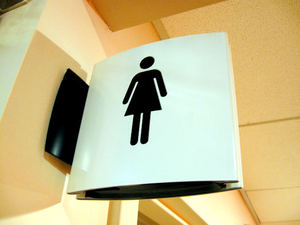A urodynamic study (or test) tells the physician how your bladder reacts to stimuli. To your bladder, stimuli is filling with urine, holding urine, and releasing urine. This study can show problem areas for many people with urinary tract problems. Below is what you can expect during a urodynamic study from someone who has had one.
There is no real prep for the patient before a urodynamic study. They physician asks only that you come to the office with a full (or as full as you can tolerate) bladder. You will be asked to remove clothing from the waist down and hold a paper sheet over your lower half for personal privacy. The nurse will ask that you sit on a stool that has a ‘toilet’ style seat with a hole in it. Beneath this seat is a measuring cup on a device that looks like a scale. You are then left alone in the room and asked to urinate in the cup.
When the doctor comes in they will check the amount of urine you put out and write it down. They will also print out some information from a computer that was attached to the ‘scale.’ This information tells them how strong your urinary stream was and how much you were able to release. You will then sit on what looks like a dentist’s chair with stirrups to hold your feet (like at the gynecologist).
The physician will lubricate a catheter with an anesthetic. This looks really daunting but it is more uncomfortable than painful, and that is just because you KNOW it is there. The catheter is then inserted in your urethra slowly. You will hear and feel your bladder fully empty after the catheter is inserted. The doctor lets this fill a measuring cup and writes down the amount. Next you will have a very small wire probe inserted in the vagina to read how your inside muscles react. Stickers will also be placed on your buttocks, inner thighs, and stomach.
Your bladder will be filled, very slowly, with saline. Saline is a natural and sterile water-based fluid. The physician will watch a graph on the computer to see how your muscles react to the bladder being filled. At some points you will be asked to cough to disturb your bladder. You will not feel any of this until your bladder begins to get full. When your bladder reaches its limit you may feel it ‘jump,’ this is called a bladder spasm. It will show up on the graphs. After this occurs (or the physician thinks you are full) the doctor will leave the room and ask you to urinate from your current seated position. You will not feel the catheter while urinating. *During this, liquid may spill below you or run down your legs. This is normal and the saline you are releasing is sanitary; Try not to panic because it can affect your results.
The doctor will return when you are done and record the results. You will then lie back as the stickers, probe, and catheter are removed. There will be some discomfort as the catheter is removed. You will be given a strong one-dose antibiotic to prevent infection.
Your results are immediately ready. Mine let us know that I have a Neurogenic Bladder. My stomach muscles were emptying my bladder and my bladder muscles did not function. If you get a result like this you will be referred to Biofeedback Physical Therapy to retrain those muscles.


